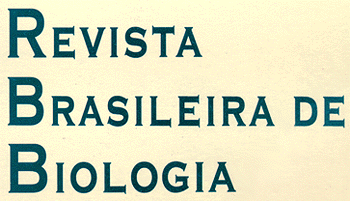From March 1987 to February 1988, Sotalia fluviatilis population size was estimated and behavioral patterns were observed in the Cananéia estuary region, in Southeast Brazil. Field observations were carried out from shore (40, with a mean observation period of 7.76 ± 2.05 hours a day, completing a total of 310.5 hours) and during line transect surveys by boat (55, 10 of them with a mean observation period of 4.44 ± 0.15 hours each and 45 with a mean observation time of 20 minutes, in the totality 64.3 hours). Dolphins occur in this region all year round, most commonly in small groups, with a greater number observed in January 1988, with no seasonal occurrence pattern. Pairs accounted for ca. 30% and calves were seen year round, always accompanied by one or more adults. Juveniles were slightly more common from July to February. More dolphins were seen from 9:00 a.m. to 10:00 a.m. (60.8%) until midday. From fourteen behavioral patterns identified, travelling (46.8%) and feeding (33.9%) were the most frequently observed. Group size and composition differed in each behavioral pattern. Diurnal migration was observed, related with hour and not to tide conditions. Dolphins were seen throughout the estuary. For the whole survey area, population density <FONT FACE="Symbol">(<img src="http:/img/fbpe/rbbio/v59n2/fd.gif"></FONT>) was 3.38 ± 1.76 individuals/km², dolphin abundance was found to be 704.8± 367.7 along 10 line transect from April 1987 from, where 82 km were surveyed. In Trapandé Bay, the largest part of the studied area, <FONT FACE="Symbol"><img src="http:/img/fbpe/rbbio/v59n2/fd.gif"></FONT>equaled 12.4 ± 10.3 individuals/km² in the morning and 16.4 ± 13.8 individuals/km² in the afternoon.
Sotalia fluviatilis; habitat use; population estimation; behavioral patterns

 Behaviour, habitat use and population size of Sotalia fluviatilis (Gervais, 1853) (Cetacea, Delphinidae) in the Cananéia estuary region, São Paulo, Brazil
Behaviour, habitat use and population size of Sotalia fluviatilis (Gervais, 1853) (Cetacea, Delphinidae) in the Cananéia estuary region, São Paulo, Brazil





